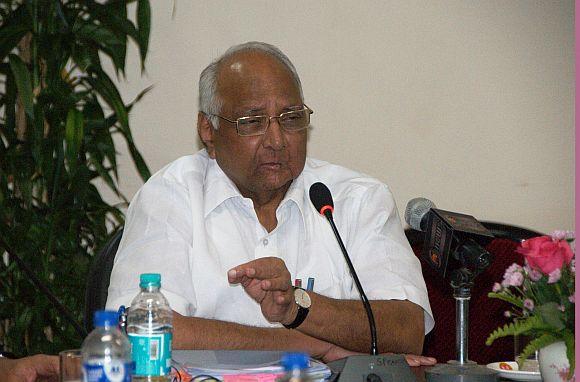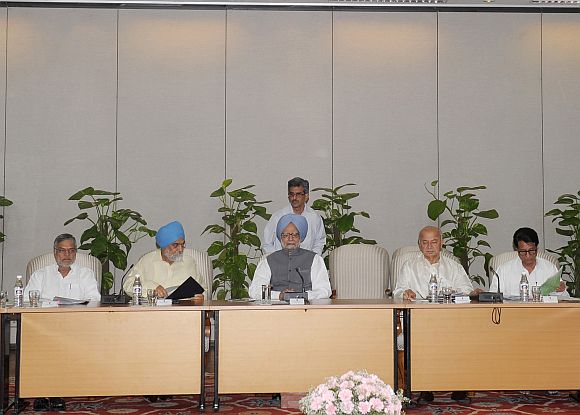
The Congress-led United Progressive Alliance coalition at the Centre, which has been plagued by ally trouble, has finally constituted a coordination committee with all its alliance partners to hold regular consultations.
The UPA coordination committee, headed by Congress President Sonia Gandhi, will meet early next week, ahead of the Monsoon session of Parliament beginning August 8.
Thereafter, it will be meeting on the last Friday of every month. Significantly, the last time the UPA had any such coordination committee was with the Left parties in UPA I, as they were not part of the government, but were rendering outside support.
It was the revolt by the Nationalist Congress Party that forced the UPA to give into the demand to set up a coordination mechanism, both at the Centre and in Maharashtra, where the Congress and NCP run a coalition government.
The coordination mechanism in Maharashtra which has already been set up, will meet on Saturday.
...

NCP chief and Union Agriculture Minister Sharad Pawar had boycotted Cabinet meetings a fortnight back to protest against the high-handedness of the Congress.
NCP's main grievance was that none of the alliance partners were informed or consulted on key policy decisions. Pawar reportedly also felt "slighted" at not being given his due for a politician of his stature.
Political observers say Pawar had mooted this idea of 'coordination committee' of all alliance partners with the objective of heading it. But Congress President and UPA chairperson Sonia Gandhi has obviously cut short his ambitions, and she decided to head the committee.
Only those UPA allies like the DMK, NCP, Trinamool Congress, which render support to the government from within and are part of the government, will be a part of this set up.
...

This will be a significant departure from UPA I, when a coordination committee was set up because the Left parties, who were supporting the government from outside support, were needed to be consulted and kept informed about policy decisions.
Basudeb Acharia of the CPI-M, speaking to Business Standard, said, "The UPA-Left coordination committee worked effectively for the initial two years of UPA I. Thereafter, the UPA started taking several decisions bypassing the committee, including issues like the disinvestment of BHEL, Neyveli Lignite Corporation and NALCO. It was then that the Left parties decided to stop attending the committee meetings, which were held once a month."
Acharia stresses that while UPA I had a common minimum programme, which was endorsed by the Left parties, the UPA II has no such programme. "The main task of the coordination committee was to implement the CMP."